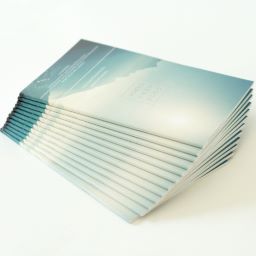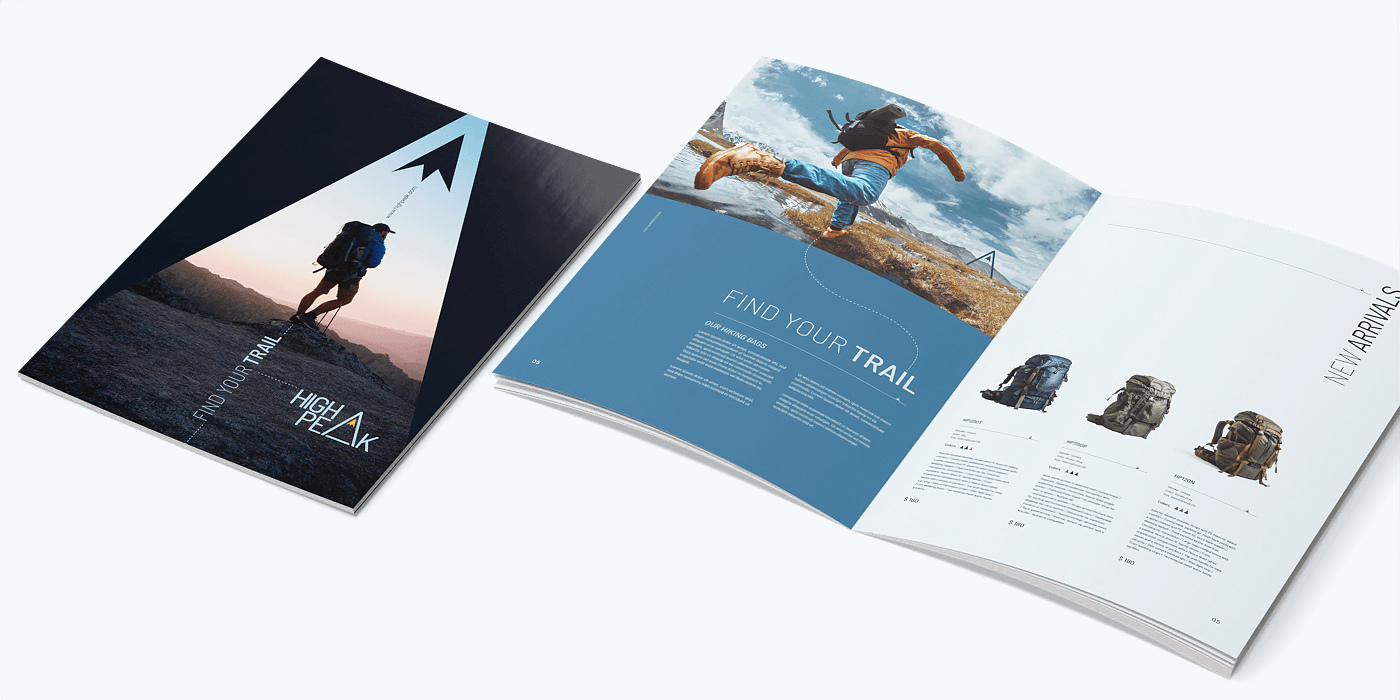A Step-by-Step Guide to Planning a Custom Booklet Printing Campaign
A Step-by-Step Guide to Planning a Custom Booklet Printing Campaign
Blog Article
The Vital Guide to Comprehending Booklet Printing Options and Techniques
The procedure of brochure printing involves numerous factors to consider that can greatly influence the end product. From picking the proper style and size to comprehending the nuances of binding approaches, each choice plays a vital duty. Additionally, elements such as paper supply and printing methods additional influence the performance of the pamphlet. As one navigates these alternatives, it becomes essential to understand just how they interconnect and what that implies for the overall result.
Comprehending Brochure Sizes and formats
When taking into consideration booklet printing, comprehending the different layouts and dimensions available is essential for accomplishing the desired discussion. Booklets can be produced in numerous layouts, consisting of saddle-stitched, spiral-bound, and perfect-bound, each offering unique benefits. Usual sizes range from typical letter (8.5 x 11 inches) to smaller sized alternatives like A5 (5.8 x 8.3 inches), enabling for flexibility based upon web content and target audience.Selecting the appropriate dimension can influence both the format and viewers involvement. Bigger sizes could match aesthetically driven web content, while smaller sized layouts might be much more straightforward and mobile. Furthermore, the variety of web pages influences the option of binding technique, as thicker booklets may require sturdier bindings. Ultimately, understanding these elements allows for an extra tailored method, making sure that the last product aligns with the desired message and visual, enhancing the general performance of the interaction.
Picking the Right Paper Stock

Binding Techniques: Considerations and alternatives
When it comes to binding approaches for booklets, several alternatives are available, each with distinctive advantages. Saddle stitch binding offers a cost-effective service for thinner pamphlets, while ideal binding methods give a more refined try to find thicker magazines. Wire-O binding stands apart for its durability and ease of usage, making it excellent for records that call for flexibility.
Saddle Stitch Binding
Saddle stitch binding uses a economical and sensible remedy for putting together brochures, making it a prominent option amongst publishers and businesses. This binding method involves folding sheets of paper in half and stapling them along the fold line, creating a well organized and cool look. Generally ideal for brochures with a reduced page count, saddle sewing is optimal for magazines, pamphlets, and educational products. The simpleness of this method permits for quick manufacturing and is typically favored for marketing items or short runs. It is crucial to note that saddle stitch binding may not be appropriate for thicker pamphlets, as the spinal column might not hold up under boosted weight. Overall, it continues to be a reputable choice for numerous printing tasks.
Perfect Binding Methods
Perfect binding is an extensively used technique that offers a professional and polished finish to publications and booklets. This approach entails gluing the pages together at the spinal column making use of a strong adhesive, enabling a tidy edge and the capability to hold a bigger variety of pages compared to saddle sewing. Perfect binding is especially ideal for thicker pamphlets, such as brochures and yearly reports, where a sturdy, flat back is preferred. Furthermore, it supplies the choice for a printed cover that can be designed to improve aesthetic charm. Factors to consider such as web page count, paper weight, and the planned usage of the pamphlet must be taken right into account, as they can impact toughness and total high quality.
Wire-O Binding Options
Wire-O binding, understood for its resilience and versatility, provides an outstanding option for booklets that require easy web page transforming and a professional look. This binding approach employs a series of steel loopholes that hold pages firmly, permitting them to lie level when open. It is particularly appropriate for directories, discussions, and handbooks due to its robust nature. Wire-O binding is readily available in different shades and diameters, accommodating different web page matters and thicknesses. Additionally, it allows the addition of tabs and covers, improving the booklet's overall visual. Considerations for Wire-O binding consist of the option of cord shade, the size of the loops, and the level of personalization desired, every one of which can greatly affect the last product's appearance and functionality.
Digital vs. Offset Printing: Which Is Best for You?
When selecting a printing technique for booklets, recognizing the differences between electronic and offset printing is necessary. Digital printing uses contemporary technology to generate top quality prints promptly and economically, making it optimal for short runs or jobs requiring fast turn-around times. It permits personalization, supplying the capability to publish on-demand with minimal waste.In contrast, offset printing is a standard technique that masters creating big quantities with consistent top quality. It involves transferring ink from a plate to a rubber covering, then to the paper, which leads to vibrant colors and precise information. However, offset printing normally calls for longer arrangement times and is much more affordable for larger volumes.Ultimately, the option between digital and offset printing depends upon job needs, budget, and desired amount. For tiny, time-sensitive wikipedia reference projects, digital may be the most effective selection, while countered might be preferable for larger, high-quality productions.

Designing Your Brochure: Tips and Ideal Practices
When designing a brochure, mindful attention to layout, font style option, and color use can greatly boost its efficiency. A well-structured design overviews the reader's eye, while ideal typefaces ensure readability and communicate the wanted tone. Additionally, effective use color can evoke feelings and highlight essential details, making the general style much more impactful.
Picking the Right Format
How can one effectively pick the best layout for a pamphlet? First, it is vital to review the brochure's function and target market. A tidy, organized design enhances readability and engagement. Making use of a grid system can aid in aligning elements continually, creating a specialist look. In addition, incorporating visual power structure with varying sizes and placements of images and text can guide the reader's eye and highlight crucial info. It is also essential to leave sufficient white room, which protects against overcrowding and permits for far better emphasis. Finally, testing different formats via mock-ups can provide insight into exactly how the style carries out in real-world scenarios, making certain that the end product satisfies both practical and aesthetic requirements.
Picking Appropriate Font Styles
A well-chosen font style can greatly improve the overall layout click here now of a booklet, enhancing the format and reinforcing the content's message. The option of font styles need to consider readability, particularly for body text, as it guarantees the info comes to all viewers. Sans-serif fonts are usually chosen for electronic formats, while serif typefaces can provide a standard feel in printed materials. It's recommended to restrict font choices to two or three to maintain aesthetic coherence. Additionally, typeface dimension plays an essential function; headings need to be distinct yet not overwhelming, while body message ought to be comfortable for reading. When picking typefaces, placement with the brochure's motif and target audience is necessary for reliable interaction and visual charm.
Efficient Use of Shade
Shade works as an effective device in booklet style, directing and forming assumptions reader emotions. It can evoke sensations of trust fund, peace, or exhilaration, depending on the tones picked. Designers must take into consideration color theory principles, ensuring that the chosen combination lines up with the brochure's message and target audience. As an example, making use of cozy shades like red and orange can produce seriousness, while cooler tones like blue and eco-friendly foster tranquility.Additionally, contrast plays an important duty; corresponding colors can enhance readability and visual allure. Consistency in shade use throughout web pages even more strengthens brand name identification and cohesion. Ultimately, reliable shade execution not only catches focus however also reinforces the pamphlet's objective, making it a vital facet of effective design.
Ending Up Touches: Coatings and Unique Impacts
While lots of think about the content and format of a booklet one of the most vital components, the ending up touches, such as layers and special effects, play a necessary role in enhancing its total allure. Coatings can provide defense and durability, making sure that the brochure endures wear and tear. Matte coatings supply a sophisticated, non-reflective surface, while glossy coatings can make shades show up more appealing and dynamic. Special effects, like embossing or aluminum foil stamping, include a responsive measurement that can create a remarkable impression. These methods can highlight details areas, attracting focus to essential info or developing aesthetic rate of interest. In addition, UV finish can give a high-shine coating that raises the total recommended you read look.Together, these ending up touches not just boost the pamphlet's aesthetic however also communicate professionalism and trust and focus to information, inevitably leaving a long-term effect on the visitor.
Cost Factors To Consider for Pamphlet Printing
Understanding the different price considerations for pamphlet printing is crucial for businesses and companies aiming to enhance their spending plans. Secret aspects affecting expenses consist of the option of paper, binding, and ink approaches. Better materials, such as premium paper or specialized inks, commonly enhance the overall expense. Furthermore, the size and page count of the booklet play a substantial duty; bigger booklets need even more sources and time to produce.Another vital factor to consider is the printing method, whether electronic or balanced out, as each has its own rates structure and suitability for different quantities. Companies need to likewise factor in layout expenses, which can differ based on intricacy and making use of professional services. Ultimately, shipping and handling charges can include in the total amount, particularly for large orders. By reviewing these aspects, organizations can make enlightened decisions that line up with their monetary abilities while achieving the preferred quality in their printed products.
Frequently Asked Inquiries
What Are the Environmental Effects of Pamphlet Printing?
The environmental effects of pamphlet printing include deforestation from paper manufacturing, carbon exhausts from transportation, and waste generation from thrown out materials - Booklet Printing. Lasting practices, such as making use of recycled paper and environmentally friendly inks, can alleviate these results
How Can I Guarantee Color Accuracy in My Brochure?
To assure shade accuracy in a pamphlet, one need to use adjusted displays, utilize specialist shade profiles, perform test prints, and choose high-quality printing solutions that supply color matching and proofing options for ideal outcomes.
What Is the Typical Turn-around Time for Pamphlet Printing?
The normal turnaround time for booklet printing varies depending upon the intricacy and quantity - Booklet Printing. Normally, it varies from a couple of days to two weeks, affected by factors such as printing techniques and finishing needs
Exist Minimum Order Quantities for Booklet Printing?

Can I Print Brochures in Numerous Languages?
Printing booklets in multiple languages is feasible. Lots of printing solutions provide alternatives for bilingual or multilingual formats, permitting effective communication. Mindful planning warranties that design aspects fit various languages without compromising readability or aesthetics. In addition, factors such as paper supply and printing techniques additional influence the effectiveness of the booklet. When taking into consideration brochure printing, understanding the different styles and dimensions offered is important for attaining the desired presentation. When selecting a printing method for brochures, understanding the differences in between digital and counter printing is vital. In addition, the dimension and page matter of the pamphlet play a substantial function; bigger brochures need more resources and time to produce.Another important factor to consider is the printing strategy, whether digital or countered, as each has its own rates framework and viability for different quantities. The environmental influences of brochure printing include deforestation from paper manufacturing, carbon emissions from transport, and waste generation from disposed of products.
Report this page